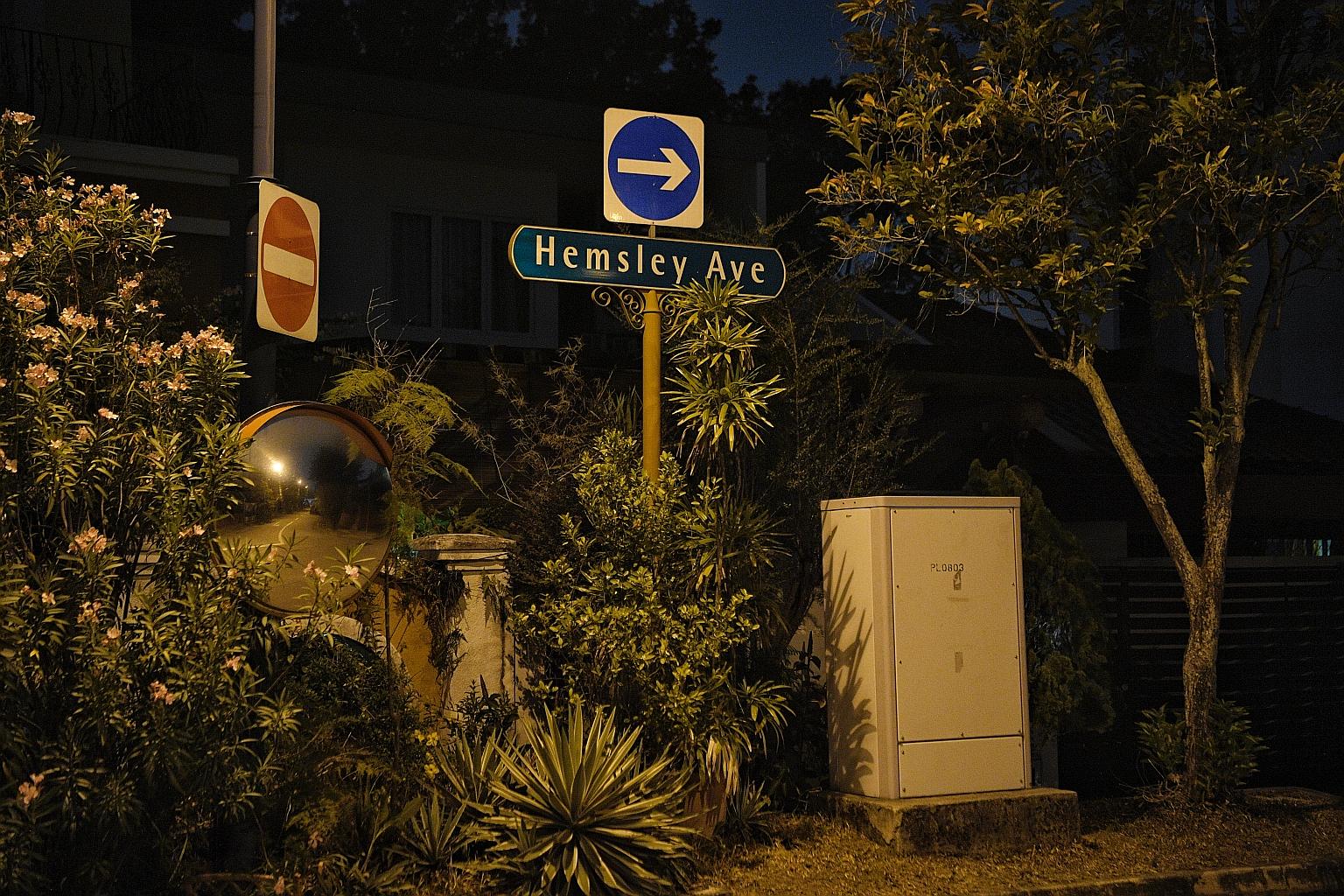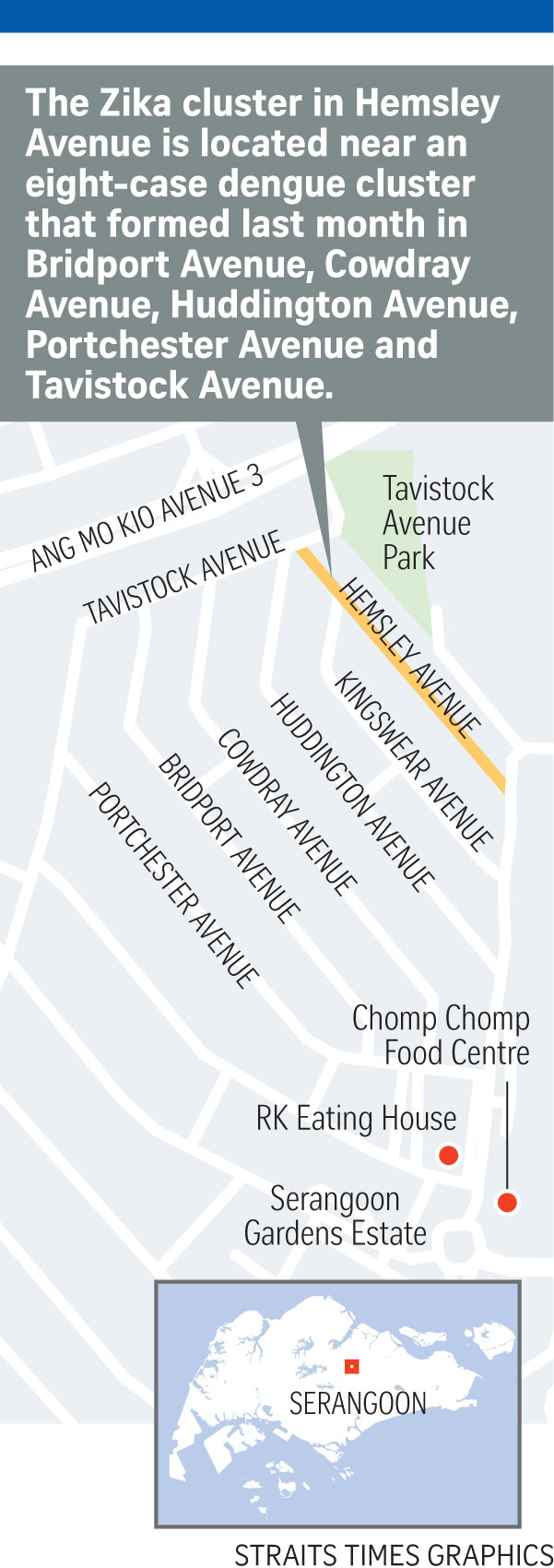3 Zika cases in Serangoon Gardens the first cluster this year
Sign up now: Get ST's newsletters delivered to your inbox

All three cases of locally transmitted Zika virus infection in the cluster in Hemsley Avenue involve residents in the vicinity.
ST PHOTO: MARK CHEONG
Vanessa Liu
Follow topic:
Three cases of locally transmitted Zika virus infection have been confirmed in Hemsley Avenue in Serangoon Gardens - the first Zika cluster here this year.
All three cases in the cluster which formed yesterday involve residents in the vicinity, the National Environment Agency (NEA) said in a statement.
There have been seven cases of the mosquito-borne Zika virus in Singapore this year as of yesterday.
The NEA noted that the Zika cluster is near a dengue cluster of eight cases that formed last month in Bridport Avenue, Cowdray Avenue, Huddington Avenue, Portchester Avenue and Tavistock Avenue.
Both Zika and dengue are spread by the Aedes mosquito, and a cluster is formed when two or more cases occur within 14 days and are located within 150m of one another.
The NEA urged residents to stay vigilant and continue to eliminate mosquito breeding habitats as "there could still be asymptomatic or mild, undiagnosed cases which might result in further transmission of the virus if there are mosquitoes in the vicinity".
The Zika virus is known to cause abnormally small heads in babies whose mothers were infected while pregnant - a condition called microcephaly. It can also affect visual development in infants who were infected before birth.
Brazil, which suffered an outbreak of the virus in 2015, had noticed an odd increase in the number of babies born with microcephaly.
The World Health Organisation in February 2016 declared an international public health emergency following an outbreak of the Zika virus, thought to be linked to clusters of microcephaly and other neurological problems.
It lifted the international emergency label in November that year.
The first locally transmitted case in Singapore was seen in August 2016. By the end of that year, about 450 people here had been infected.
The last Zika cluster prior to the latest one was in July 2017, when three cases involving residents in Serangoon North Avenue 1 were reported.
Only one in five people develops symptoms when infected with Zika, and these are usually fairly mild. The symptoms include a low-grade fever, rashes, conjunctivitis, mild headaches, as well as muscle and joint pains.
The NEA said yesterday that it has begun vector control operations in the dengue cluster area, including spraying insecticide indoors as well as misting and thermal fogging outdoors. As of yesterday, it has tracked down and destroyed five breeding habitats in the dengue cluster area: One located in a home and four others found in common areas and other premises.
NEA officers and community leaders will distribute information leaflets and insect repellents to raise awareness and emphasise the need to eliminate mosquito breeding habitats and to apply repellent as a precaution.
Members of the public are advised to seek medical attention if they are unwell, especially with symptoms such as fever and rash.


